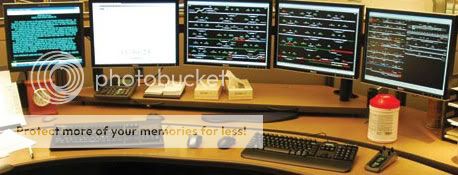That's OK. No hard feelings. We all get carried away at times.
Next time you have to clean up a double boot, you might want to have a look at my tutorial:
Dual Boot - Delete a OS - Windows 7 Forums
Thanks whs for being so gracious about my apology for my insults. :thumb: That's a great tutorial. I made the exact mistake you spoke of, by stopping at step 3 when I removed the boot entry for Win8 using EasyBCD, but didn't reconfigure the BCD for Win7. Too late she cried, because as you pointed out in your tutorial, I now couldn't get back into Win7!

From previous work with multiple OSs on the main HD I was aware of the need to remove a partition rather than just format it to get rid of all boot info on that partition, so having unplugged the ITB WD HD I assumed the boot data was in the 100MB space set aside on the SSD HD with Win7 on it. So I tried a work around by running the Win7 installation disc and using the advanced options for the boot manager at the beginning to clean the 100MB space by creating a partition on it and then deleting it. I then tried the boot repair option at the beginning of the installation disc to try and recover the boot but it didn't work.
I also ran the Acronis recovery disc on which I'd saved the original boot data for Win7, replacing only the boot data, but that didn't work either. So finally I just formatted the entire SSD HD, (quick format, not unconditional which I normally use), reloaded the Acronis image of Win7 with boot data and it worked fine. It only took 7 minutes on SSD to reload the acronis image of Win7 with all my programs installed, and another 10 to put all my music, videos, etc back into the OS from an external USB3 HD.
I've always been interested in multiple OS on a single HD, and on separate HDs. Back in the days when XP was king, I would frequently reload the OS while experimenting, and got really annoyed at having to constantly re-activate XP. I was using Norton Ghost for restoring partition images but it was slow and cumbersome. And when SATA came in it no longer worked. So I moved to NTI backup, but that stopped working at Vista, so ended up with Acronis, which I believe is brilliant, except by default every partition image is set to progressively continuosly update via cloud storage. So all your new mistakes get copied into your ghost image. So you have to turn this off.
Anyway, I complained to Microsoft Aust re having to constantly re-activate XP. And I was quite amazed when they offered me a free retail copy of XP Pro with SP2 installed in return for my XP Home upgrade. They also gave me two free $50 half hour sessions with a MS Techo. At the time I was doing deliberate corruption of the boot data with Win98 and XP loaded, to find out how to repair it in a similar real life scenario. After endless hours of playing around with boot repairs to NTLDR via the XP repair option off the installation disc at boot up, and typing diskpart at the prompt, I spent one of my $50 sessions with the MS techo, who also couldn't fix it using boot repair commands. He told me the only way was to run the XP disc as if doing a new installation, and then run the option to repair existing installation. Eventually though I found a post in a tech forum which did enable the boot to be repaired using XP installation R option on boot.
The MS techo also told me you could not load XP first, that you had to load Win98. But I found a work around to that, by creating 2 primary partitions on the HD, and loading XP onto the second; then running 3rd party BootMagic to create a boot menu. Next, I divided the first partition into two primary partitions with Partition Magic, so the XP boot data was preserved in the new middle partition, otherwise it was lost if you just loaded XP into the first partition. Finally I formatted the first of the two new partitions in FAT32 and loaded Win98 onto it. This deleted the boot to XP from the normal Windows boot, but I already had BootMagic in place and simply added Win98 to this boot. I could now successfully run both OS from BootMagic having loaded XP first. It didn't really prove much, but it was just an itch I had to scratch. When I told MS they didn't really want to know, but simply said "I was dangerous!" Still not quite sure what they meant by that?
With Vista I started working at using the various commands to manipulate the BCD, but found it very confusing and time consuming compared to XP. By this time I was now running XP & Vista on the same HD, and got as far as being able to use the command prompt to rename the Vista & legacy XP boot entries, but gave up on storing, deleting and restoring boot entries as I suddenly found EasyBCD.
I must say that was a stroke of genius on your part to work out to re-configure the BCD as in steps 4 & 5 of your tutorial. :thumb: If ony I'd known!

Would have saved me a lot of hard work. Still it's stored in the brain memory partition for future use, assuming of course the OS is still working there! And with all the spelling mistakes I'm making am beginning to wonder if it's not corrupted! lol!
Cheers PB













